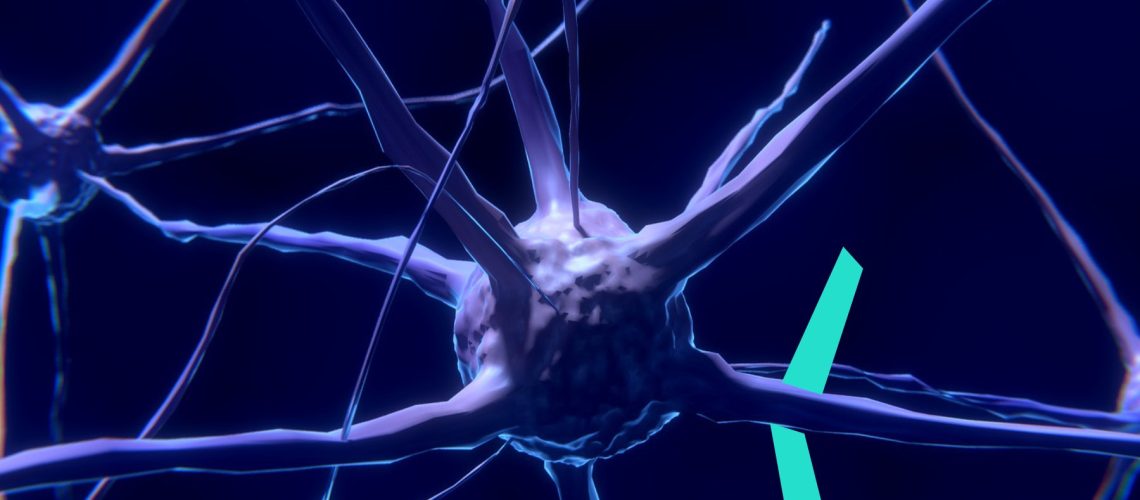The nervous system regulates the activities of the body and mind. The brain is part of the nervous system. There are many complicated ways to describe the brain’s functions. As a way to make this information easier to understand, it can be helpful to think about the brain as having three parts

The Thinking Brain is in charge of thinking, organizing behavior, making choices of what is right and wrong. It is the part of the brain that takes in information from the body’s senses and decides on actions. It is also the center for consciousness, intelligence and personality. It’s the big squidgy bit that sits at the top of our head.
The Limbic Area has a critical part of the brain called the amygdala. This part automatically evaluates what is safe and what is not. It is hard-wired to remember anything that has threatened us so as to sound an alarm if it perceives danger. After stressful and/or traumatic events this appraisal system can become too active and it can sound an alarm even if there is no danger. This can cause the accelerator of the nervous system to get “stuck on high.” It can have a hard time telling the difference between what poses a danger and what is safe. For example, if someone was robbed or assaulted, hearing footsteps behind them may trigger fear. Their heart begins to race and they may have an impulse to run. This bit sits right in the middle of the brain and can’t actually been seen unless we cut the brain in half. Then it looks like a seed in the middle of a plum.
The Survival Brain goes into action when you perceive danger. This happens automatically without thinking. The survival brain goes into action to save your life. It triggers our heart rate to go up and our breathing to go faster and tells chemicals to flood our brain to give us the energy to fight or run. When faced with danger that is perceived as life threatening, the human body goes into instinctual defensive responses. The graphic of a person seeing a snake with his eyes triggers parts of his brain to react quickly. This bit is the stem that connects the brain to the spine and is called funnily enough, the brainstem.
Understanding how the human animal behaves when threatened, and how these behaviours might be the key to understanding traumatization and, subsequently, to recovery.

Humans are mammals, very highly advanced mammals, but mammals all the same. The human brain has evolved to incorporate, amongst other things, the capacity for: language, reasoning, creativity, philosophy and self-awareness. The higher brain functioning enjoyed by humans sets us apart from other mammals. Yet the human brain evolved to possess advanced capabilities, and the higher levels rest upon more instinctive and reflexive structures – figuratively and literally.
The human brain is hierarchically organized into three sections. The lower, or reptilian, brain incorporates the brain stem and is primarily associated with the unconscious regulation of internal homeostasis. The upper brain, or neo-cortex, is responsible for higher brain functions analysis of the external world and self-awareness and consciousness. The midbrain, or limbic system which sits atop the reptilian brain and is located in deep in the middle is found in all mammals and is involved with learning, motivation, memory, emotional regulation and some social behaviour. Additionally, the brain consists of two hemispheres: right and left. The two sides of the brain, for the most part, work together yet specialize in differing functions. The left brain is generally accepted to be closely identified with cortical functioning and the right more densely connected with the limbic and reptilian brain. The left brain is concerned with what Dan Siegel refers to as the “three L’s – linear, logical, linguistic” and the right brain is connected with the body, regulation of the autonomic nervous system (ANS), nonverbal aspects of language and more emotional functions.
Significantly, in terms of trauma, the structures largely involved in responding to threat are located in the lower and mid sections of the (predominantly) right brain. This means when threatened human beings respond, initially at least, instinctively and reflexively.
Most people will have had an experience of responding to something perceived as threatening before they were aware of the threat. For example, a man walking through the Australian bush might find himself immobilized moments before his higher brain functions process the snake-like-stick on the floor. He responds instinctively to the snake-like object with behaviour most likely to ensure survival. It is some moments later that his neo-cortex processes the finer detail and assesses the stick to be less threatening than originally perceived. The reason for the brain processing information in this way is simple: it prioritizes survival. The capacity for philosophical theorising is worth little to a man that has stepped on a poisonous snake

The significance of the amygdala
“The amygdala is the key component in neural networks involved with fear, attachment, early memory, and emotional experience throughout life”
The human brain is wired up in such a way that survival is given precedence. The amygdala’s role in survival is paramount. Every piece of sensory input that enters our brain is routed via the thalamus (in the reptilian brain) and then to the amygdala (in the limbic brain). The neural pathway from the thalamus to the amygdala is fast- and necessarily so The amygdala filters the information searching out threat. If any threat is recognised, whether real or perceived, the hypothalamus is immediately stimulated to respond. It does so by triggering the release of stress hormones to prepare the body to defend itself and by alerting the sympathetic branch of the ANS to become highly aroused in readiness to meet the threat.
A split second after the thalamus sends sensory information to the amygdala it begins the much slower neural process of sending the same information to the hippocampal and cortical circuits for further evaluation The findings of the hippocampus and cortex are then relayed back to the amygdala. In the previous example, of the man and the stick that resembles a snake, the amygdala will be encouraged to calm (motionless sticks do not usually pose a threat to physical or psychological integrity).
On the other hand, terror overwhelms higher brain functioning as “the focus on immediate survival supersedes all medium- and long-term goals”. Possible reasons for this include the necessity of the brain to surrender oxygen to the body, and the high levels of stress hormones such as cortisol, and noradrenaline drive the autonomic nervous system (ANS) into a state of hyperarousal, mediated by the sympathetic branch of the ANS.
When the structures of the brain lose, or lack, integration, dissociation occurs. Dissociation is the brain’s ability to protect itself from the emotional component of an experience that it considers to be too distressing for the individual to tolerate. In trauma, dissociation seems to be the favoured means of enabling a person to endure experiences that are in the moment, beyond endurance. While dissociation is a creative way of surviving in the moment, it bodes ill for future psychological and physical wellbeing. It leaves individuals alternating constantly between dissociation/numbness, and hyperarousal, aggression and hypervigilance. (This is discussed at length in the section on therapeutic tools)
The Five Fs
The human system broadly responds in one (or more) of five predictable ways when threatened. ‘Fight, flight, freeze, friend’ and flop’ (Ogden and Minton, 2000; Porges, 1995 & 2004). The five Fs, are instigated by the amygdala upon detection of threat. The amygdala responds to the threat in the way it perceives will most likely lead to survival.
Friend is the earliest defensive strategy available to us. At birth the human infant’s amygdala is operational and they utilize their cry in order to bring a caregiver to them. The non-mobile baby has to rely upon calling a protector to its aid, in the same way that the terrified adult screams in the hope that rescue will come. Once mobile the child may move toward another for protection, and with language comes the potential to negotiate, plead or bribe ones way out of danger. Throughout life when fearful, most humans will activate their social engagement system.
The social engagement system, or friend response to threat, is evident in the child who smiles or even laughs when being chastised. To smile when fearful is likely to be an unconscious attempt to engage socially with the person causing the fear.
Fight, as a survival strategy, is fairly self-explanatory. The threatened individual may respond with overt aggression or more subtle ‘fight behaviours’, for example saying “no”.
Flight is any means the individual uses to put space between themselves and the threat. It may involve sprinting away from the perceived danger, but is more likely exhibited as backing away or, particularly in children, as hiding.
When the amygdala deems that friend, fight or flight are not likely to be successful it will elicit a freeze response. Levine points out that immobility has several advantages to mammals when threatened by a predator, namely: that the predator has less chance of detecting immobile prey; that many predatory animals will not eat meat that they consider to be dead; and that if the predator does kill, the freeze mechanism provides a natural analgesic. Between mammals of the same species the freeze response indicates submission, with the victorious animal recognising their dominance and leaving the subordinate animal alone. In the majority of inter-personal threats between humans however, the advent of one party freezing is often either ignored or taken as consent to the assault (whether verbal, physical or sexual).
Flop occurs if, and when, the freeze mechanism fails. The moment the threat increases, despite freeze having intended to put an end to the situation, the amygdala will trigger the ANS to swing from predominantly sympathetic activation to parasympathetic activation. The body will shift from a position of catatonic musculature tension (as is observed in ‘freeze’) to a ‘floppy’ state, whereby muscle tension is lost and both body and mind become malleable (hippocampal and cortical functioning will very likely be severely impaired at this point). The survival purpose of the flop state is evident: if ‘impact’ is going to occur the likelihood of surviving it will be increased if the body yields, and psychologically, in the short-term at least, the situation will be more bearable if the higher brain functions are ‘offline’. People who have elicited flop as a survival mechanism are very submissive and will make little or no outward protest concerning what is happening to them. They will bend to the will of the person perceived as threatening in an attempt to stay alive.


